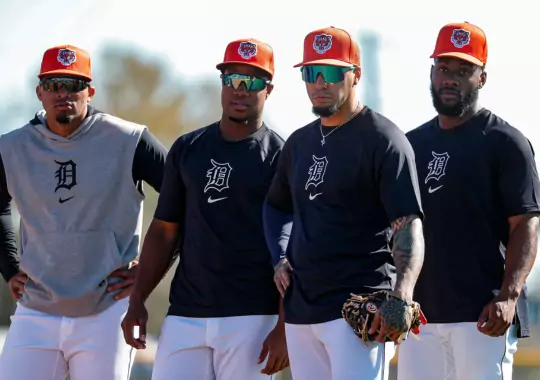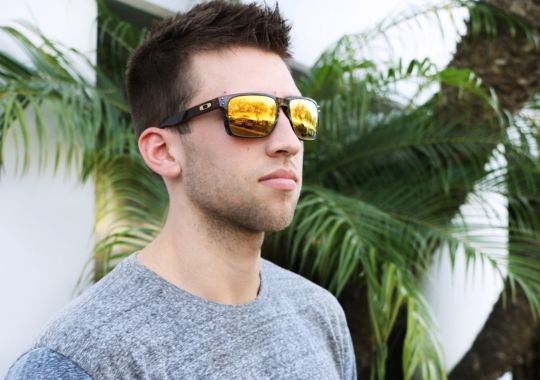Do you love baseball but hate the sun’s glare? Are you looking for the best lens color for baseball? that will protect your eyes and enhance your game? Choosing the right lens color is a must. As any passionate baseball player knows, intense sunlight can be blinding and make it hard to follow the ball in motion.
As Amazon affiliates we may earn a commission if you purchase a product at no cost to you.
Do You Really Need Baseball Lenses?
The short answer is yes – baseball sunglasses are an absolute must. Not only do they keep your eyes safe from the sun's rays, but they also help improve your athletic performance by improving visibility and reducing glare.
Baseball sunglasses also protect flying balls and dust, and dirt that can fly up from the field during a game. With all these benefits, it's clear why baseball sunglasses are essential for any serious ballplayer or lenses for bright sunny day. Ensure you get a comfortable pair with maximum UV protection for your safety and performance on the field.
Here’s What You Should Know About Baseball Glasses
When shopping for baseball sunglasses, there are a few factors to consider.
- Firstly, ensure the frames fit comfortably and securely on your face – you don’t want them slipping off during the game!
- Secondly, choose a pair that offers maximum UV protection – Baseball glasses should block at least 95% of UVA and UVB rays. You may want to choose a pair with polarized lenses that reduce glare and improve visibility.
- Finally, consider getting a scratch-resistant coating on your lenses to keep them looking great for years. With these tips in mind, you’ll be sure to find the perfect pair of baseball glasses for your next game!

The Best Lens Colors for Baseball
Brown/Amber
Brown and amber lenses are great for blocking out blue light, which can cause glare and reduce your depth perception. These colors will also help you spot the ball in motion more easily in bright sunlight. They also provide contrast enhancement, allowing you to pick up subtle details like the stitching on a baseball when looking at it from far away.
Brown and amber lenses are perfect for players who spend time in the outfield or need extra clarity to catch a ball quickly coming their way. These colors will also help you better differentiate between the field's white base and the green grass. These lenses are also aesthetically pleasing, helping you look your best on (and off) the field! Brown/Amber shades enhance your face shape, eye color, and overall style.
Clear/Yellow
Clear/yellow lenses are great for baseball players looking for a lighter lens option. These some kind of orange lenses transmit up to 90% of visible light, making them ideal for cloudy days or night games. They also provide increased contrast and clarity, allowing players to pick out ground balls more easily and determine the movement of pitches. The yellow tint helps absorb blue light, reducing glare and helping players avoid eye fatigue.
Clear/yellow lenses are also beneficial for fielding in the outfield, as they improve depth perception and allow players to better trackballs in the air.
Mirrored Coating
The mirrored coating blue baseball lenses are great for baseball players looking to reduce glare. It reflects light away from the eyes and prevents UV rays from entering your eyes, making it ideal for bright sunny conditions. The mirrored coating also provides optimal brightness and clarity so you won't miss any action on the field. On top of that, mirrored coating comes in various colors, so you can pick a style that fits your preferences.
Keep in mind, though – this coating adds an extra layer and can make the prescription lenses heavier, so be prepared for slight discomfort if wearing these lenses for long periods.
Rose/Red
Rose/red lenses are great for baseball players looking to reduce the intensity of sunlight without sacrificing visual clarity. Their pinkish-red hue is designed to filter out blue light while preserving natural colors, so you can easily track the ball’s movement and position in the field. Rose lenses also help increase contrast, making it easier to spot the ball and react quickly to sudden changes in its trajectory.
Rose tones also offer moderate protection from UV rays, which can harm your eyes if left unprotected in the sun for prolonged periods.

Choose Baseball Glasses According to Your Position
Now that you know which lens colors work best for playing baseball, it’s important to consider your position on the field. Use a brown/amber shade or mirrored coating if you play in the outfield. These lenses provide enough contrast and clarity to quickly track a ball in motion.
We recommend clear/yellow lenses or rose/red shades for infielders. These tones will help you differentiate between a white base and green grass and provide optimal clarity and contrast to pick up subtle details like the stitching of a baseball.
Recommended Article

Frequently Asked Questions FAQs
Are green lenses good for baseball?
Yes, green lenses are a great choice for baseball. They provide excellent depth perception and contrast enhancement which helps players better see the ball in flight and make more accurate hits. Green lenses also reduce eyestrain and help protect your eyes from UV radiation.
Does color affect sports performance?
Yes, color can be beneficial for sports performance. Different colors can enhance contrast and depth perception in different ways. Green, for example, is known to help with concentration and visual acuity, while red lenses reduce glare and increase reaction time. Each color has its advantages, which makes it important to choose the right lens color for your sport.
What color lenses are best for sports?
Choosing the right color lenses for sports depends on the activity and lighting conditions. For activities with plenty of natural light, gray or brown lenses provide the most accurate color perception. For low-light conditions, such as indoor sports, yellow or amber lenses can help to improve visibility by enhancing contrast. Polarized lenses are also a great choice for sports, as they reduce glare and allow for better clarity.










